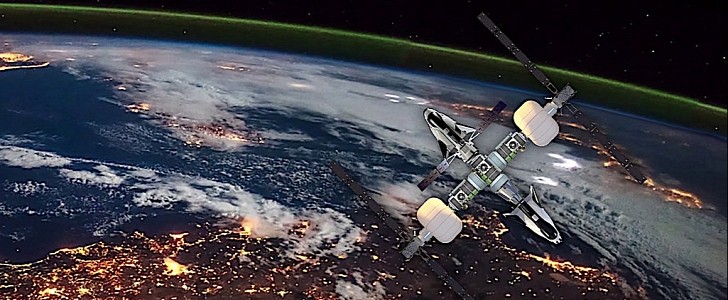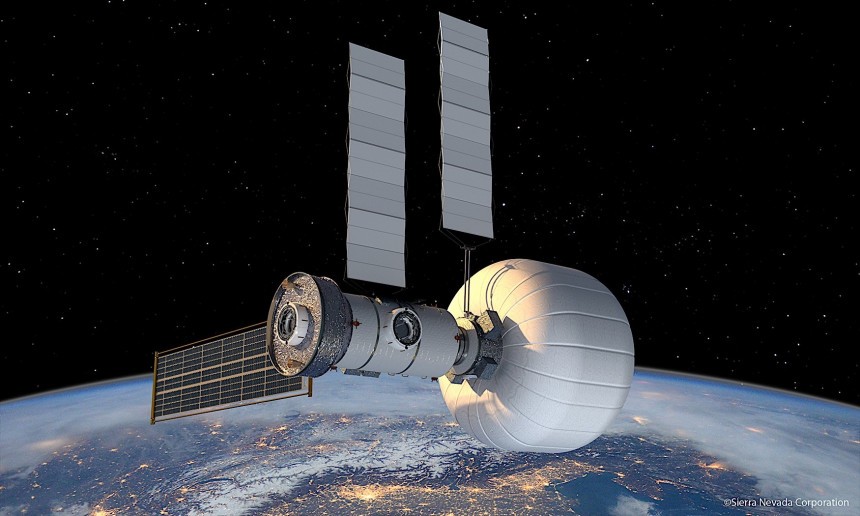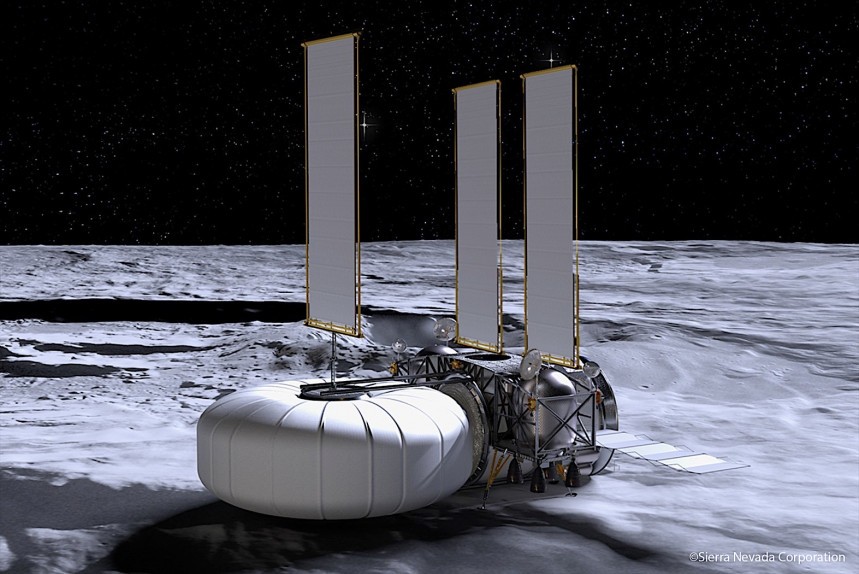With the International Space Station (ISS) on its way out the door, governments and companies are racing to come up with solutions that could keep humans up in space even after 2031. By the looks of it, human presence up there will not only continue, but also expand, courtesy of the countless space companies developing their own space stations.
Not long ago, we talked about the three that received NASA funding and backing for their projects, namely Blue Origin, Nanoracks, and Northrop Grumman, but the list of entities wanting a piece of the action is much larger.
Sierra Nevada Corporation, for instance, is one of those entities. These guys are presently engaged in projects that will give birth to a new way of launching cargo to space, thanks to the Dream Chaser spaceplane, and the still-on-the-drawing board Sierra Space Station.
The backbone of this space station, and also that of Blue Origin’s Orbital Reef, is something called Large Integrated Flexible Environment. LIFE for short, it’s a more of a habitat than a module, one which just as well could be used on the surface of the Moon, Mars, and whatever alien world we decide to visit in the future.
For LIFE’s development, Sierra is working with ILC Dover, the maker of astronaut spacesuits for NASA - the name was responsible for all the suits worn during the Apollo program, the ones being worn during extra-vehicular activities, and on the ISS. That’s because Sierra needed access to a manufactured fiber called Vectran, and used in said suits.
Vectran makes up the outer layer of this inflatable habitat (yes, it’s inflatable, we’ll get to that later), and was chosen because it has a great thermal stability at high temperatures, and is highly resistant.
Beneath the Vectran layer sits another one, made of nylon, and present there as a means to protect the third layer, called bladder, from damage. This last one is made of urethane, and its main function is to keep air in.
All three are tied together by a woven structural restraint layer, “strong enough to withstand the internal pressure required for the crew to live and work.” A multi-layer soft-goods shield tops the entire construction, its main goal being to protect the habitat from micrometeoroids and radiation.
Now, we promised we’ll come back to the inflatable stuff. Such space habitats have been envisioned before, the most high-profile of them all being the Bigelow Expandable Activity Module. Sierra says LIFE is not a copy of that, but based on a technology created by ILC to close off tunnels in case of need.
The main advantage of having an inflatable structure is that it can be launched in a much smaller rocket from Earth, and can grow to its maximum size once on location.
For LIFE, as it is now envisioned, maximum size means a diameter and length of 27 feet (8.2 meters) each. That provides a pressurized volume of 300 cubic meters (10,594 cubic feet), which is about one third of the volume offered by the ISS.
The habitat is divided into three floors, which house hardware for any need an astronaut would have, from science labs and robotic work stations to a medical bay, sleep and hygiene quarters, galley, exercise equipment, and even an area to grow food, called Astro Garden.
The LIFE habitat Sierra is presently working on (including by creating a land-based version for testing purposes) can house just four crew members on long-duration missions on another world. The habitat can be expanded to house up six people in Earth orbit, and can double that for short periods of time during crew changeovers. More importantly, a large number of LIFEs can be linked together to form a more massive station.
There are several more years left until we get to see LIFE expanding into the space around our planet, and even more on top of that before we see it on other planets. But with it and similar technologies in the picture, the future of space exploration looks more promising than ever.
Sierra Nevada Corporation, for instance, is one of those entities. These guys are presently engaged in projects that will give birth to a new way of launching cargo to space, thanks to the Dream Chaser spaceplane, and the still-on-the-drawing board Sierra Space Station.
The backbone of this space station, and also that of Blue Origin’s Orbital Reef, is something called Large Integrated Flexible Environment. LIFE for short, it’s a more of a habitat than a module, one which just as well could be used on the surface of the Moon, Mars, and whatever alien world we decide to visit in the future.
For LIFE’s development, Sierra is working with ILC Dover, the maker of astronaut spacesuits for NASA - the name was responsible for all the suits worn during the Apollo program, the ones being worn during extra-vehicular activities, and on the ISS. That’s because Sierra needed access to a manufactured fiber called Vectran, and used in said suits.
Beneath the Vectran layer sits another one, made of nylon, and present there as a means to protect the third layer, called bladder, from damage. This last one is made of urethane, and its main function is to keep air in.
All three are tied together by a woven structural restraint layer, “strong enough to withstand the internal pressure required for the crew to live and work.” A multi-layer soft-goods shield tops the entire construction, its main goal being to protect the habitat from micrometeoroids and radiation.
Now, we promised we’ll come back to the inflatable stuff. Such space habitats have been envisioned before, the most high-profile of them all being the Bigelow Expandable Activity Module. Sierra says LIFE is not a copy of that, but based on a technology created by ILC to close off tunnels in case of need.
The main advantage of having an inflatable structure is that it can be launched in a much smaller rocket from Earth, and can grow to its maximum size once on location.
The habitat is divided into three floors, which house hardware for any need an astronaut would have, from science labs and robotic work stations to a medical bay, sleep and hygiene quarters, galley, exercise equipment, and even an area to grow food, called Astro Garden.
The LIFE habitat Sierra is presently working on (including by creating a land-based version for testing purposes) can house just four crew members on long-duration missions on another world. The habitat can be expanded to house up six people in Earth orbit, and can double that for short periods of time during crew changeovers. More importantly, a large number of LIFEs can be linked together to form a more massive station.
There are several more years left until we get to see LIFE expanding into the space around our planet, and even more on top of that before we see it on other planets. But with it and similar technologies in the picture, the future of space exploration looks more promising than ever.





















